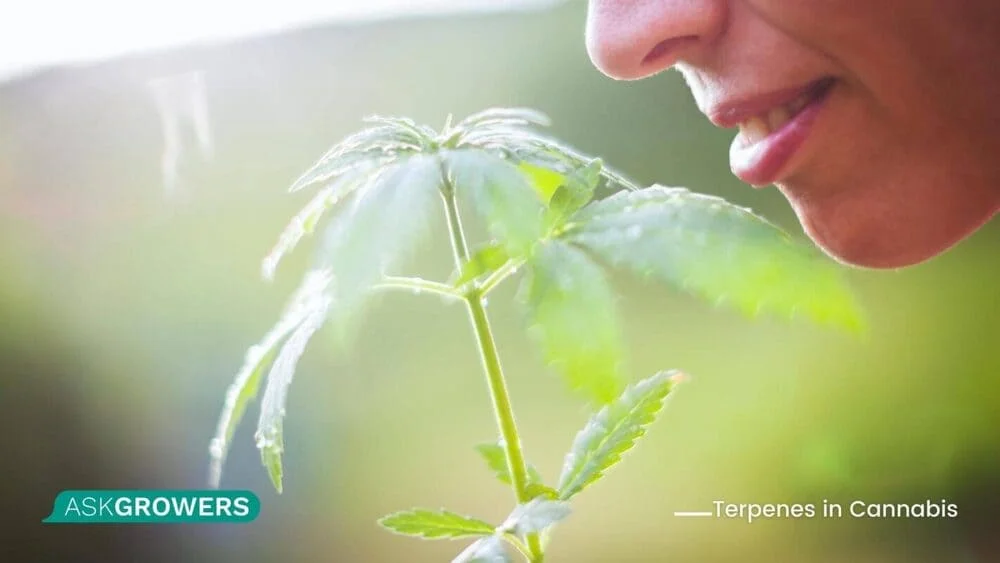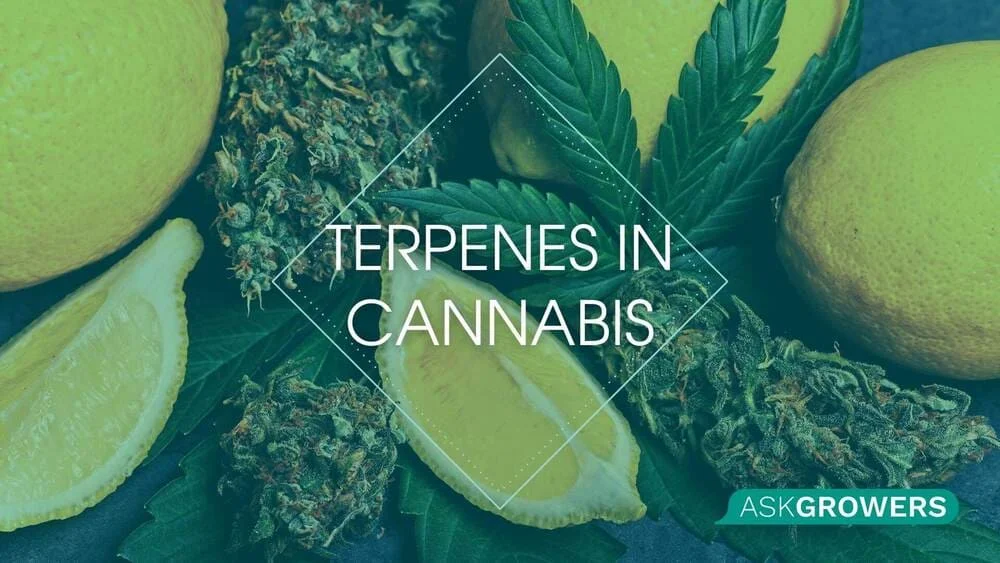It’s hard to find a person who hasn’t heard about cannabinoids and their effects. These essential components of marijuana, which include CBD and THC, are responsible for the psychoactive and medical properties of the plant. But what about other cannabis components, such as terpenes? This article explains the role of terpenes in cannabis and describes the most common terpene types.
Defining Terpenes
So, what are terpenes in weed? Scholars exploring these constituents of essential oils explain that terpenes are an important flavoring component. It means they are responsible for the aroma characteristics of weed.
However, it’s not all about the smell. What do terpenes do to the human body? They have many positive effects on the human body, as they can improve cognitive function, boost up serotonin and dopamine levels, and help the body fight inflammation. In addition, terpenes have antifungal, analgesic, gastroprotective, and antioxidant properties. Recent research revealed that terpenes might even be responsible for enhancing the therapeutic properties of cannabinoids. Experts also add that terpene interaction in different strains explains varying sensory attributes, consumers’ experiences, and market prices.
Another critical thing to understand about terpenes is that they are 100% safe, as recognized by the Food and Drug Administration (FDA) and other regulatory agencies. Terpenes consumed in small amounts (e.g., when you smoke weed) are non-toxic. Most of them are a part of a regular human diet, as people consume them with other terpene-containing foods.
Major Terpenes Found in Cannabis
Now it’s time to determine which terpenes do what. Below is the list of the most common terpenes in cannabis, with brief descriptions of their main properties.
- Myrcene is the primary terpene found in weed, but it is also found in hops, thyme, mango, lemongrass, and guava melon. Myrcene has a distinctly earthy, musky flavor, resembling cloves. It is responsible for the calming and soothing effects of weed.
- Limonene is the second most common terpene in nature and the third most common terpene in cannabis. It has a powerful citrus aroma and can be found in all citruses, including lemons, oranges, grapefruits, limes, juniper, etc. Limonene improves mood and provides anxiety, depression, and stress relief.
- Humulene is one of the major cannabis terpenes, contributing to its woody, earthy, spicy, herbaceous, and floral aromas. It is used in modern medicine because it offers anti-inflammatory, antibacterial, and appetite suppressant effects, which have been well-researched by pharmaceutical companies.
- Borneol is one of the most commonly occurring terpenes in cannabis, but it also can be found in ginger, rosemary, camphor, and thyme. It has a woody, camphor-like aroma. Borneol has served as an important chemical component in Chinese medicine due to its anti-inflammatory, pain-relieving, and anticoagulant properties. Borneol has the distinctive property of boosting the effects of medical drugs.
- Linalool is one of the rarest terpenes found in cannabis, mostly in small quantities. Linalool has a spicy and lavender aroma, bringing relaxation and calming effects. It is also said to provide anti-inflammatory and analgesic properties, particularly useful for athletes.
- Caryophyllene found in cannabis is distinguished by a strong spicy, peppery aroma, resembling cinnamon and cloves. Caryophyllene offers potent anti-inflammatory and sedative effects.

- Pinene is one of the most widespread terpenes in nature, found in pine trees, basil, nutmeg, parsley, and rosemary. Cannabis containing terpene boasts a strong pine scent and has anti-inflammatory, pain-relieving, and anti-anxiety effects.
- Bisabolol is a lesser-known terpene found in cannabis. Weed strains containing this terpene have anti-inflammatory, anti-irritant, antioxidant, antimicrobial, and analgesic properties. Attentive smokers can catch a nutty, fruity scent with herbal and floral undertones with a tender trace of coconut.
- Eucalyptol (also known as cineole) is usually found in eucalyptus, mint, sage, and tea tree oil. This terpene exhibits potent antibacterial effects and can also be used to treat patients with Alzheimer’s disease and asthma. Distinguished for its cooling properties, eucalyptol constitutes only up 0.6% of a total terpene profile of a strain.
- Nerolidol is found in jasmine, tea tree, lemongrass, and some cannabis strains. Characterized by a floral aroma with citrus, apples, and rose notes, it has sedative, anti-anxiety, antimicrobial, anti-parasitic, antioxidant, and pain-relieving properties.
- Carene is found in rosemary, lemons, pines, and cedars, offering citrusy and cypress aroma. It provides anti-inflammatory effects and chronic pain relief and promotes bone health.
- Camphene is terpene common for carrots, pepper, dill, fennel, nutmeg, thyme, as well as other fruits and vegetables. Camphene has a damp, pungent, herbal, minty aroma with pine undertones. It is primarily found in Indica strains. Camphene causes cooling sensations, having anti-inflammatory, antibiotic, antioxidant, analgesic, and antifungal effects.
- Terpineol is a terpene naturally occurring in more than 150 plants, including lilacs, lime blossoms, eucalyptus sap, and pines. In cannabis, terpineol boasts the distinctive pine smoke aroma and causes a relaxing, sedative effect. Among the therapeutic qualities are anti-inflammatory, antioxidant, antitumor, and antimicrobial.
There are many other terpene types found in cannabis. These include Valencene, Sabinene, Ocimene, Terpinolene, Phellandrene, Pulegone, and Geraniol. You don’t need to remember all these terms, but it makes sense to pay attention to terpenes dominating the cannabis strains you use. Terpene compounds may affect the aroma and medical effects of the weed you use, so make sure you use a strain that meets your needs and expectations.
Conclusion
If you purchase cannabis in dispensaries, check the strain’s description to learn the terpene composition. It may give you some cues about what to expect in terms of aroma and overall experience. High-terpene weed is always fresh, so check the package date as well. If you are a grower, you need to understand that the variation in terpene composition may be caused by the plant’s environment (e.g., the temperatures, soil type, fertilizers, etc.). Therefore, you need to create a perfect growing environment for the desired terpene composition.

